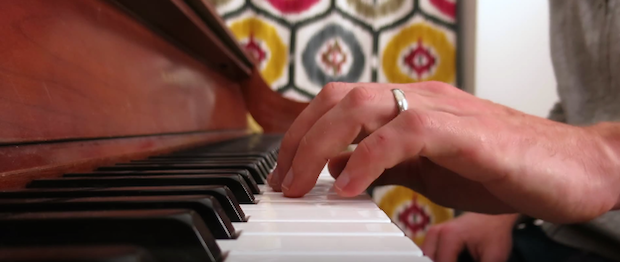 Screencap via youtube.com
Screencap via youtube.com
This article originally appeared on Soundfly.
As Oscar Peterson once said, “Technique is something you use to make your ideas listenable.”
Until you’ve built up a bit of pianistic muscle memory, trying to play with good technique can feel super awkward. If you’ve taken private lessons, you’ve probably rolled your eyes at a few reminders to relax your wrists and play on your fingertips. If you haven’t had someone around pointing those things out, there’s a good chance you’ve ignored some aspects of technique altogether.
However, I can say with experience (both first- and secondhand) that forcing yourself to sit straighter and relax your shoulders is a heck of a lot better than having to soak your wrists in epsom salt baths and endure hours of acupuncture.
Here are some technique and posture tips from Soundfly's free beginner piano series, “Building Blocks of Piano,” to help you kickstart your way into good playing habits.
1. Sit upright
Sit in such a way that your back is straight and your shoulders are basically in line with your hips. Avoid hunching your back and make sure the keyboard is comfortably within reach.
2. Stay relaxed
This is a big one. If you find that your muscles are getting too tense, stop for a moment. Take some deep breaths and gently stretch or shake it out. If your muscles still feel too tight, try stepping away from the piano for a moment. Take a short walk and come back. If you ignore the tension, your body will overcompensate, causing you to slip into habits of bad technique pretty quickly.
3. Relax your arms
Flapping your arms is unnecessary. We’ve all seen cartoons and videos in which the piano is played in an overly dramatic way, with sways and leans and impassioned arm lifts.
 Image via flypaper.soundfly.com
Image via flypaper.soundfly.com
Showmanship aside, none of this motion is necessary. Instead, keep thing calm, with your arms loosely on either side of your body, giving your hands lots of freedom to move across the keys. Your elbows should be very slightly bent, your hands a bit cupped as though they’ve been gently resting on your knees.
4. Play with your fingers
Focus on striking notes with the tips of your fingers. This doesn’t mean isolating your hands completely – if the arm needs to move, it needs to move. What we’re talking about here is being conservative with your movements. Use the weight of your hands and think about working with the instrument rather than against it.
You may have heard of a brass or woodwind player being described as having a great or unique sound. While this idea doesn’t completely translate to keyboard instruments, pianists can develop their sense of touch, thereby affecting their “sound” as a musician. Developing good technique will have a significant impact on your pianistic voice. Keep these four tips in mind and you’ll be well on your way to a long and healthy relationship with the piano.
Next up: 8 Essential Exercises to Reduce Pain and Increase Dexterity While Playing Piano
Mahea Lee is a classically trained pianist and composer who has a degree from a jazz school and leads an electro-pop band. Her greatest musical passion is lyrical songwriting, but she's been known to write the occasional fugue. She graduated from Berklee College of Music, where she majored in contemporary writing and production and minored in music theory. For more Mahea, check out Soundfly's course, The Improviser's Toolkit.







